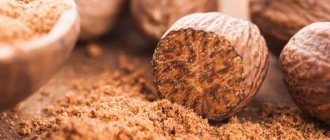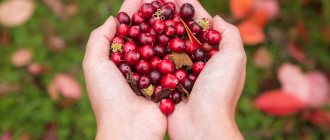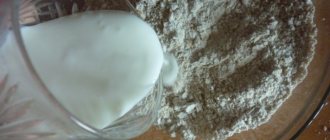general description
The small genus Feijoa is a representative of the Myrtaceae family.
It includes shrubs of three varieties, but only one of them is cultivated - Feijoa Sello. A tree-like plant (shrub) can reach 4 meters in height. Its branches are covered with hard, oval-shaped leaves that retain their bright color throughout the year. The upper part of the leaf plate is painted green, the lower part is silver-gray. The trunk is covered with rough brown bark, and the branched root system actively grows in the top layer of soil, covering large areas so that the moisture-loving plant always has access to water.
The bushes become especially attractive during the flowering period. In May-June they are covered with bisexual flowers, the diameter of which is no more than 4 cm. Their petals are fleshy, edible, and have a sweetish taste. The color of the petals is white with pinkish splashes, and inside there are numerous long stamens of a purple hue. The buds grow singly on young branches or form lush inflorescences that delight the eye until the beginning of July.
Where does it grow
Civilized people became acquainted with feijoa not very long ago. The German botanist Friedrich Sello encountered this shrub in the middle of the last century when he was exploring the tropical forests of South America. The specific name feijoa was given by the name of the discoverer Sello. The shrub received its generic name in the 19th century after the director of the Brazilian Museum of Natural History, Johnny de Silva Feijo.
The bushes were brought to Europe in 1890, and 23 years later they ended up in the botanical gardens of Italy. From there, the plant spread throughout the Mediterranean countries, after which it reached the southern lands of East Asia.
Feijoa can take root in any region where winter frosts do not fall below -12 ° C, and the summer is hot. Thailand and South America are considered the homeland of this tropical beauty: Brazil, northern Argentina, Paraguay, Uruguay.
Today, feijoa is grown for harvest in the following countries:
- New Zealand;
- Turkmenistan;
- Australia;
- Vietnam;
- Italy;
- Russia (Crimea, Krasnodar region);
- Argentina;
- Cambodia;
- Indonesia;
- Chile;
- Singapore;
- Panama;
- Uruguay;
- Georgia;
- Laos;
- Malaysia;
- Azerbaijan;
- Brazil;
- Ukraine.
Application
Feijoa fruits can be consumed in any form: very tasty tender and juicy fresh ripe berries, no less tasty and aromatic dried fruits. Feijoa is used to make jam, jam, pie fillings, compotes and lemonade, and added to salads. If you put the berries through a meat grinder and combine them with sugar, you get a tasty treat that perfectly boosts the immune system. The dried peel can be added to tea to add flavor.
Market Analytics
- COVID-19 is changing the rules of the game in the cosmetics market
- Beauty of the future: cosmetic innovations 2020
- New ingredients are the driving force of the cosmetics industry
Convenient search for beauty salons on our website
Beauty salons in Moscow Beauty salons in St. Petersburg Beauty salons in Ekaterinburg Beauty salons in Novosibirsk
Latest blog posts on our website
- Naturecream / Geranium (Pelargonium) oil for skin health and beauty
- Prostye-sovety / Save on a beauty salon: procedures that can be done at home
- Naturecream / Growth Factor - brings back youth?
- Oksana-Lezina / 3 effective abdominal exercises from a fitness instructor for beginners
- Prostye-sovety / Making perfect curls at home
- Prostye-sovety / Which hair removal method to choose
- Naturecream / Wrinkles Puppets
- Naturecream / PEPHA-TIGHT - instant skin lifting
- Naturecream / Blue light - a danger to the skin
- Naturecream / Cocoa Butter – A treat for the skin
Latest forum topics on our website
- Mrs._Smith / Badly sunburned! What to do?((
- Ice / Is it necessary to combine fitness classes with a diet?
- Antonova / What can be used for hair loss?
- Radio operatorKat / Who was on a protein diet?
- Suzanna / Mesotherapy on the face
Other articles in this section
| Rosehip Rosehip is a widespread, unpretentious thorny shrub of the rose family, about 1.5 m in height with branches covered with strong thorns; its cultivated form is known as Rose. Rosehip flowers are pink or white-pink, with five large free petals. The small berry-like fruits are red-orange in color, oval in shape and contain many hairy achenes. The fruits ripen during the fall and are collected before frost, since even slight sub-zero temperatures destroy the medicinal properties. |
| Figs Figs (wineberry, fig tree, fig, fig tree) have the most delicate and very sweet fruits with a characteristic fibrous structure of the pulp and thin skin. The color of the fruit depends on the variety and can be pale yellow, green, blue-brown and dark purple. This fruit has a pear-shaped or slightly flattened shape, and the size can vary quite a lot: most figs are the size of a walnut or slightly larger, but the fruits of some varieties reach the size of an average pear. Unripe fruits are not edible. The taste of ripe figs, depending on the sugar content, ranges from moderately sweet to cloying. |
| Blueberry Blueberry is a perennial low-growing shrub, rarely reaching a height of more than 40 cm. Greenish-white flowers with a delicate pink tint appear in May-June and by mid-summer the fruits are already ripening. The berries are round in shape, small, slightly flattened, blue-black with a bluish bloom. The juicy pulp is dark red, sweet and sour, often astringent, and contains many seeds. Blueberries are good honey plants, but the plant needs good light to bear fruit. Productivity is also highly dependent on temperature conditions during flowering and ripening. Blueberries have such a wide range of beneficial properties that they are rightfully considered a medicinal plant. The fruits, leaves and shoots of blueberries are widely used in folk medicine. |
| Grapefruit The fragrant grapefruit weighs from 200 to 500 g and is the result of crossing an orange and a pomelo. Different varieties have different peel colors, which can be yellow, orange or pink. Its color affects the color of the pulp and its sweetness: the more saturated pink the peel is, the sweeter the fruit itself. |
| Grapes Grapes are a climbing woody vine that has a powerful root system and consists of long perennial shoots. It is attached to the support with antennae. Grapes are considered one of the first plants that people began to consciously grow and thanks to which they began to lead a sedentary lifestyle. The fruit of the grape is a round or oblong berry with juicy, refreshing pulp and may contain small hard seeds. Depending on the variety, grape berries differ in shape, color, size and taste, which can vary from sour to sickly sweet. The color of the fruit comes in various shades of yellow, green, pink, burgundy, blue, purple, and black. The berries are collected in loose or dense clusters, which have different shapes and weights. |
| Dogwood Dogwood is a large fruiting shrub that bears small oblong berries. Outside, the fruits are covered with a smooth skin of all shades of red: light, bright, dark and deep burgundy, almost purple, under which there is juicy sweet and sour pulp and a hard inedible pit. |
| Acerola A low evergreen acerola tree does not exceed 5-6 m in height. Its fruits are small berries about 2 cm in diameter, round and slightly flattened. The juicy, slightly sour pulp tastes like raspberries. Acerola is also called Barbados cherry and sweet cherry, but it belongs to a different family, and its fruits are more similar to citrus fruits. In acerola fruits, the pulp is divided into segments and contains hard seeds. The ripe fruit is dark red in color, with a thin glossy skin and a piquant bittersweet flavor. |
| Guarana Guarana fruits resemble hazelnuts in shape and size. They are covered with a skin on top, which bursts as they ripen. Inside each fruit there are 1 or 2 rounded dark brown seeds surrounded by white pulp. It is these seeds that serve as a source of guaranine, an effective stimulant containing 2 times more caffeine than the coffee beans themselves. They are soaked, washed, dried, fried and ground into a powder that is used to make energy drinks and an ingredient in many weight loss medications. |
| Cherry plum Cherry plum is a type of traditional fruit plum. This heat-loving and very capricious plant is grown in the southern regions. The fruits of cherry plum are sweet and sour, round in shape, small in size, yellow, pink, red, purple or almost black in color. Tasty and aromatic cherry plum has many medicinal qualities. |
| Strawberry Strawberry is a herbaceous plant and reaches a height of about 35 cm. Strawberry fruits are false berries, which are an overgrown receptacle. The color of the berries, depending on the variety, can be all shades of red, the shape is predominantly conical, the flesh is tender, juicy, incredibly tasty and aromatic. |
Calorie content
The berries of the evergreen shrub are increasingly found on store shelves. It is not surprising that exotic lovers who watch their figure are interested in how many calories are in feijoa. The kcal indicator per 100 grams of product depends on the processing method.
Feijoa has the following calorie content:
- fresh - 55.3;
- dried - 81;
- with honey - 200;
- jam - 193;
- marshmallow - 200.
Some people mistakenly believe that feijoa is a fruit. In fact, these are large berries 2–5 cm in length, weighing up to 50 grams. In appearance they resemble unripe walnut fruits. The berries have juicy and fleshy pulp with the taste of sweet strawberries, tart kiwi and sour pineapple.
Inside the fruit you can see small seeds surrounded by a translucent pulp. The edible part of the berries is protected from the effects of the external environment by a dense, lumpy skin of a dark green or yellowish color. Feijoa is often called “pineapple guava” among people.
Dietary properties
When ripe, the berries quickly deteriorate and cannot be transported, so they are collected unripe. It is better to buy hard berries in the store; in the refrigerator they will quickly reach a suitable state for consumption.
The pulp of ripe feijoa has a jelly-like consistency, which is considered the most useful product. The white color of the insides indicates that the berry is not yet ripe, and brown indicates spoilage.
Culinary experts are often interested in the proportion of feijoa fatty acids or nutritional value, that is, the content of proteins, fats and carbohydrates. Pineapple guava contains many vitamins and minerals essential for human health. These indicators per 100 grams of fruit pulp can be found in the following table.
| BJU | Quantity |
| squirrels | 0.7 g |
| fats | 0.4 g |
| carbohydrates | 15.2 g |
| Vitamins | |
| beta carotene | 2 mcg |
| B1, thiamine | 6 mcg |
| B2, riboflavin | 18 mcg |
| B5, pantothenic acid | 233 mcg |
| B6, pyridoxine | 0.067 mg |
| B9, folic acid | 23 mcg vitamin |
| C, ascorbic acid | 33 mg |
| E, alpha tocopherol | 0.16 mg |
| PP | 0.29 mg |
| K | 3.5 mcg |
| beta-cryptoxanthin | 3 mcg |
| Minerals | |
| calcium | 17 mg |
| potassium | 172 mg |
| phosphorus | 19 mg |
| sodium | 3 mg |
| magnesium | 9 mg |
| iron | 140 mcg |
| manganese | 84 mcg |
| zinc | 60 mcg |
| iodine | 35 mg |
| copper | 36 mcg |
The rich composition of the berry gives it beneficial and medicinal properties.
In addition to vitamins and minerals, feijoa contains:
- alimentary fiber;
- essential amino acids;
- saturated, mono- and polyunsaturated fatty acids.
Benefit
Feijoa fruits are high in iodine. A deficiency of this element is observed in many people, but it is very important for the smooth functioning of the body, especially for the thyroid gland. The substances present in the berry activate the growth and development of tissues, control the functioning of the cardiovascular and nervous systems, and also normalize hormonal levels.
Beneficial properties of feijoa:
- Antioxidants prevent the development of cancer cells and slow down the aging process.
- Replenishes reserves of substances important for health.
- Protects against colds and improves digestive processes.
- Improves immunity, the body begins to actively fight various diseases.
- Lowers blood pressure and cholesterol levels in the blood.
- Speeds up metabolism and is considered a good preventative against colds.
- Ensures uninterrupted operation of all body systems.
- Masks made from the pulp of such berries can provide good care for problem skin, and also smooth out wrinkles and saturate the epidermis with moisture.
- Has an antifungal and antibacterial effect.
When choosing food products, the fair half of humanity often pays attention to their harm and calorie content. Pineapple guava is perfectly absorbed by the body and goes well with vegetables and fruits in salads. Its medicinal and dietary qualities are highly valued among women who want to lose weight and take care of their health.
Why is it harmful?
Unfortunately, this nutritious fruit can bring not only benefits, but also harm.
When using it, it is important to consider some negative properties:
- The acids contained in tropical berries are quite aggressive. Their prolonged exposure to tooth enamel can lead to its destruction. Slightly weakened enamel can recover on its own; the main thing is not to brush your teeth immediately after eating feijoa, and also not to eat rough and hard foods. To neutralize the acid, it is recommended to rinse your mouth with a weak solution of clean water and soda.
- In rare cases, an allergic reaction can be observed; it occurs when certain components of the fetus are intolerant. Therefore, in order to avoid such a nuisance, you need to carefully read the composition of the product and start consuming it with small portions.
- An overdose of iodine can be harmful to health and disrupt the functioning of the thyroid gland.
- Do not eat unripe berries; they can be identified by their too tart and sour taste. They can lead to disorders of the digestive system.
- Pineapple guava has a high content of pectin substances, and they do not interact well with milk protein. Therefore, it is important to maintain a time interval of 40 minutes between consuming incompatible products.
There are also a number of diseases for which it is better not to eat feijoa.
The berry is contraindicated in the following pathological conditions:
- hyperthyroidism;
- problems with the gastrointestinal tract;
- nervous disorders;
- renal failure;
- high blood sugar;
- low cholesterol;
- high intracranial pressure;
- chronic liver disease;
- increased blood clotting.
How to choose a ripe fruit?
The main thing is to choose the right feijoa, since only in summer this berry is juicy, tasty and healthy. Pay attention to color and smell. Real feijoa smells very strongly, and the sweetness should be felt most strongly.
The only drawback is the low availability of this berry, since for us it is an exotic fruit that many have not even tried. If you suddenly see it on the market, be sure to take at least 100 grams when you still have the opportunity.
Useful Application
The tropical fruit has many beneficial and medicinal properties, which are explained by its rich composition.
In medicine
In the pharmaceutical industry, green berries are used in the manufacture of dietary supplements (dietary supplements). Homeopathic doctors value the fruit for its high content of iodine and vitamin C, so they recommend it to their patients for the treatment of atherosclerosis and the thyroid gland.
The essential extract is actively used for dermatological diseases as a natural anti-inflammatory agent. English scientists have conducted many studies and proven that feijoa oil has an effective antimicrobial effect and copes even with fungal strains. Experts from Italy have confirmed its antitumor properties.
Pineapple guava is also respected by traditional healers:
- In winter, it is useful to drink feijoa infusion to prevent colds and infectious diseases. For this, 5 tbsp. spoons of dried fruits are poured with 400 ml of boiling water and left for 24 hours. The finished drink is taken 100 ml 3 times a day half an hour before meals.
- Brew two tablespoons of feijoa petals in a glass of boiling water and drink before meals. This tea will help get rid of nervous disorders and depression.
- To treat the thyroid gland, eat 300 grams of fresh pulp every day. The course of treatment is three weeks.
For children
Feijoa should not be given to young children. The fact is that the digestive system of babies is not able to break down some of the compounds contained in the fruit, and this can lead to unpleasant side effects.
Pregnant and breastfeeding women can include pineapple guava in their diet as iodine and folic acid are essential for healthy fetal development. In addition, it contains substances that can saturate the body with important elements, improve digestive processes and protect against colds.
During the feeding period, it is important to observe moderation, because new foods often lead to diathesis in infants. You can consume this berry in any available way.
List of the most popular and convenient:
- The fruit is cut in half and the pulp is removed with a spoon.
- Grind and add to your favorite dishes, for example, salads, baked goods.
- You can make compote or puree from the berries.
- Gourmets cut feijoa into thin slices, dry it and add it to tea.
- The peel is also very useful; you can simply chew it periodically or grind the unpeeled fruits in a blender. This dish is called “raw jam”.
For diabetics
The high sugar content makes pineapple guava unavailable for diabetics. Therefore, it is better to stop using it or consult your doctor in advance.
For weight loss
The subtropical berry is considered an excellent remedy for cleansing the body and healing the thyroid gland. In the fall, it will help you lose a few kilograms and strengthen your immune system.
The fruit contains a lot of pectin, it is able to remove metabolic products, toxic substances, pesticides, salts and heavy metals. Feijoa gently cleanses the gastrointestinal tract without washing out “good” bacteria or causing dysbiosis.
For weight loss, the following recipes for processing berries are usually used:
- 0.5 kg of fruits are crushed using a meat grinder and mixed with 500 g of granulated sugar. The finished jam is distributed into sterilized jars and closed with clean lids. Since the dish has not been cooked, it does not last long - only two weeks in the refrigerator.
- The berries are finely chopped and poured with boiling water in a ratio of 10 tablespoons of the product to 4 glasses of water. The drink is infused in a thermos for about 8–12 hours and drunk every morning after waking up.
- The berry is suitable for preparing a healthy dessert that even gourmets will enjoy. Several feijoas are peeled and passed through a meat grinder, then mixed with a small amount of nuts and ground again in a blender. The mass is combined with 2-3 tablespoons of natural honey and served.
In cosmetology
This tropical delicacy is used not only for food purposes; it nourishes and cleanses the skin well. It is especially useful to prepare masks from such a product during the cold season.
Popular recipes:
- For dry and normal dermis: ¼ cup of feijoa puree combined with the yolk of one egg, 1 tbsp. l. olive oil and two tbsp. spoons of cottage cheese. The mass is ground until smooth, after which it is applied to the face and décolleté. After 20 minutes, wash off the product with warm water; for greater effect, it is recommended to use it 3 times a week.
- For oily people: add a tablespoon of lemon juice and camphor alcohol to ½ cup of chopped berries. Keep the mask on the skin for 15 minutes and apply twice a week.
- For the fading one: art. a spoonful of oatmeal is poured with a decoction of chamomile, then combined with 2 tbsp. l. feijoa puree and 20 drops of almond oil. The mask is applied to the face, after 20 minutes it is removed and the skin is lubricated with a nourishing cream. To get results, this product must be used every two days.
- For hands: mix the pulp of tropical berries and olive oil in equal proportions, add a small spoon of honey. Massage onto the skin and hold for 20 minutes, rinse, then wipe your nails and hands with lemon juice.
Medicinal folk remedies with feijoa
The fruits of this plant are used in medicine as a means to prevent colds, thyroid diseases, atherosclerosis and problems with the gastrointestinal tract, especially gastritis and colitis.
Traditional medicine uses this fruit to treat constipation, gout, and is used as a dietary dish for problems with excess weight due to its high fiber content. The essential oil of this exotic shrub is used in cosmetology; various masks and lotions are made from it. Below are medicinal recipes for various ailments based on Feijoa Sellowiana.
From stress
Residents of large cities are increasingly experiencing stressful situations - problems at work, an accelerated pace of life, all sorts of minor troubles can ultimately provoke stress, which negatively affects a person’s overall health and can lead to serious illnesses. The nervous and cardiovascular systems suffer from stress, and immunity decreases.
To prevent stress, traditional medicine advises eating 3-4 berries daily, or preparing tea based on the leaves of the plant with the addition of mint and honey.
For hypertension
Hypertension is a disease of the vascular system in which blood pressure increases. The disease is dangerous because it can cause a stroke, cause irreparable harm to health and even lead to death.
Therefore, it is extremely important to monitor blood pressure levels, especially for older people.
For hypertension, the best preventive effect will be achieved by eating 5 fresh fruits daily. Due to the presence of potassium, magnesium and ascorbic acid, this fruit has a relaxing effect on blood vessels, thereby reducing blood pressure. Moreover, the process of hematopoiesis improves, hemoglobin increases and cholesterol levels decrease, which has a beneficial effect on the entire cardiovascular system.
Recipe for high blood pressure
Pour 100 grams of peeled berries with 250 milliliters of water, add one teaspoon of natural honey. Drink the resulting mixture throughout the day.
For goiter
Goiter or struma is a disease characterized by a permanently enlarged thyroid gland. The most common form of the disease throughout the world is endemic goiter, caused by iodine deficiency.
Feijoa is an excellent remedy against this disease, since it contains a large amount of iodine (100 grams contains 47% of the daily value); it is the only fruit in which the concentration of this mineral is almost the same as in sea kale. To treat and prevent goiter, you should take medicinal tea: the leaves of the plant are dried, fermented, and brewed like regular tea. Take one tablespoon of raw material per glass of boiling water and leave for half an hour. This tea is drunk twice a day.
For pancreatitis
The fruit is very useful for various diseases of the gastrointestinal tract, especially pancreatitis. Not only the pulp, but also the peel has beneficial properties; the substances in it stimulate the immune system, remove toxins, and prevent the formation of cancer due to the presence of antioxidants. All these properties have an extremely positive effect on the condition of the intestines, stabilizing its functioning.
Traditional medicine recipe for pancreatitis
Mix freshly squeezed aloe and feijoa juice in equal proportions, take 20 grams on an empty stomach for a week. The juice is easily digestible, has a gentle effect on the gastrointestinal mucosa and perfectly protects the pancreas, relieving inflammatory processes.
Decoction
Grind 10 fresh leaves of the plant, add 500 milliliters of water, bring to a boil and cook for about 10 minutes. After this, add a third of a teaspoon of salt, cool, and leave for one hour. Drink 50 milliliters of decoction before meals.
For hand skin
This plant is perfect as a healing, nourishing and moisturizing agent for the skin of the hands, will prevent premature aging and saturate it with essential vitamins. To prepare the cream, you need to take a tablespoon of olive oil, a spoonful of honey and a spoonful of feijoa pulp. Mix all ingredients in a blender, apply the resulting slurry onto your hands with massage movements for 15 minutes. After this, rinse off the cream with warm water.
Watch an interesting video about the feijoa plant and its beneficial properties.
Dish recipes
The fruits are often used to prepare unusual dishes. Feijoa goes well with fruits and vegetables, and is often complemented with fish and meat. In the confectionery industry, the pulp is processed and used to make candy fillings. At home, it is ground with sugar to obtain jam, jam or a preparation for vitamin compote.
The salad will be an excellent addition to a holiday table or diet menu.
Ingredients:
- beets - 400 g;
- walnuts - 100 g;
- feijoa - 150 g;
- vegetable oil - 3 tbsp. spoons;
- salt - one pinch.
A 100-gram serving of the dish has an energy value of 302 kcal.
Cooking instructions:
- Wash the beets, place in a saucepan with cold water and cook for two hours. In this way, it will not be possible to quickly bring the root vegetable to readiness, but it will retain almost all the vitamins.
- Peel the cooled beets and chop on a coarse grater.
- Cut the tropical fruits into halves and scoop out the pulp with a dessert spoon, then cut into medium pieces.
- Remove the shells from the nuts and finely chop them with a knife.
- Combine the ingredients, add salt and oil, mix well.
Pork with feijoa
This delicious meat salad is easy and simple to prepare; even novice cooks can handle this recipe.
List of ingredients:
- pork pulp - 300 g;
- exotic berry - 150 g;
- lime - half;
- almonds - 30 g;
- flour - 2 tablespoons;
- onion - one turnip;
- vegetable oil;
- soy sauce.
Feijoas go well with meat products; such dishes will diversify your daily diet.
Cooking method:
- Wash the pork, dry it with a paper towel and cut into thin slices.
- Dip them in flour and fry in well-heated vegetable oil for 5 minutes.
- Cut the lime and berries into slices, finely chop the onion and add to the meat, cook for another 3 minutes.
- Remove from heat and season with soy sauce.
- Pour boiling water over the almonds and leave for 10 minutes.
- Place it in a bowl of cold water.
- After five minutes, remove the peel from the nuts; it will come off well.
- Cut them into thin slices and use to decorate the dish.
Tincture
Ripe feijoa tastes like a mix of kiwi, pineapple and strawberries. These notes manifest themselves well in alcohol, so a pleasant tincture is prepared from such fruits at home. If desired, you can enrich the taste by adding fresh cranberries to the drink.
To make alcohol, it is important to use ripe or overripe berries without rot or spoilage. Only a high-quality base is suitable for infusion, for example, highly purified moonshine, luxury vodka or ethyl alcohol diluted with clean water.
Components:
- feijoa - 300 g;
- alcohol - half a liter;
- cranberries - 100 g;
- sweetener (sugar or honey) - 100–150 g.
Cranberries will add tartness and interesting sourness to the product. Instead, you can take strawberries, strawberries or Victoria - this option will appeal to the fair sex. You shouldn’t mix the berries; if you want to try everything, it’s better to make three different tinctures.
Recipe:
- Rinse the feijoa well in warm water and, without peeling, cut into small pieces.
- Grind the cranberries in a blender until a liquid and homogeneous mass is obtained.
- Place the prepared ingredients in a container for infusion, add sugar and pour vodka.
- Close the lid tightly and place in a dark place for 14 days. Shake the jar thoroughly once a day.
- Strain the finished tincture through a piece of gauze, squeeze the cake well.
- Taste the drink; if necessary, add sugar or dilute with water to reduce the strength.
- Pour into glass bottles and seal carefully. Over time, the tincture may become cloudy; this will not affect the taste, but you can additionally filter it through cotton wool.
This drink can be stored away from direct sunlight for up to 12 months.
How to choose and store correctly
It is important to know how to choose the right fruit, because this affects not only the taste, but also the usefulness of the berry.
It is worth paying attention to the following points:
- The peel is dark green, matte and lumpy. The presence of bright green spots, a glossy shine and the absence of wrinkles indicates that the feijoa is not yet ripe.
- Fruits with dense and white flesh should be left until ripening.
- If the fruit does not have a stalk, it means that it was cut from the tree when it was not ripe.
- Dark spots on the peel indicate that the fruit has begun to deteriorate.
- The size of the tropical delicacy depends on the variety and does not indicate maturity.
Fresh, ripe berries can be stored in the refrigerator for no more than one week, so it is better to eat them immediately rather than put them off for later. You can also grind it with sugar to make jam. Raw can be stored for about two weeks in the refrigerator, while heat-treated meat must be eaten within a year.
What are the benefits of feijoa?
A large amount of vitamins B and C, as well as microelements such as manganese, iron and copper are present in this product, so it is recommended for people with heart disease to improve its functioning.
The most amazing thing is that this berry is capable of accumulating iodine in the body, the deficiency of which affects almost all inhabitants of the planet.
Since the berry is considered medicinal, it is important to know how much it should be eaten per day. The best option is to eat just a couple of berries to saturate your body with energy, provide iodine, but not overload it with too many vitamins. Feijoa contains essential oil, which makes the berry smell very pleasant.
Growing at home
Many lovers of indoor plants are thinking about growing feijoa at home. This will allow you to get delicious fruits directly from the bush, as well as admire the beautiful flowering.
Rules for caring for a tree:
- In the summer, the tropical plant can be placed on an open balcony or terrace; it can easily tolerate 30 degree heat, although experts recommend keeping it cool (20-22°C). In winter, the bush goes into hibernation, so it needs to be moved to a room with a temperature of 10–14 degrees. It is worth remembering that the flower does not like direct sunlight, as it can burn its crown.
- On dry and hot days, it is necessary to spray the feijoa foliage and the soil in which it grows. Watering is carried out after the earthen ball dries out by ¼, since the bush loves moisture very much.
- Feijoa loves frequent feeding; for this, it is fertilized every two weeks with nitrogen-based liquid formulations.
- The plant needs a certain soil; it is prepared from turf, leaf soil, peat, humus and river sand. All components are taken in equal proportions and calcined in a frying pan with a thick bottom.
- If you plan to grow the tree for the purpose of producing berries, it is important to remember that feijoa flowers are cross-pollinated, so it is worth having at least two bushes. However, self-pollinating hybrids have been bred, these include Crimean early and Nikitsky aromatic.
Reviews
I consumed one feijoa fruit for a month, which helped a lot with iodine deficiency, I didn’t even have to take pharmacological drugs.
Alexander, Tula.
When I was on a fruit diet, I bought feijoa to diversify my diet. It is very easy to eat, just cut it in half and scrape out the pulp with a spoon.
Angela, Moscow.
The doctor advised to include feijoa in the menu, as it contains a lot of vitamins and microelements. I didn’t really like the taste of the fresh fruit, it was reminiscent of strawberries and kiwi, but I also felt the aroma of juniper, which is not very appetizing. But then I found a very interesting recipe: the “butts” are cut off from the berries, cut into circles and poured with liquid honey. After just 10 minutes the fruit softens and becomes very tasty.
Lyudmila Ivanovna, Tomsk.
I really liked these tropical fruits, I’ve been buying them since they were brought to our supermarkets. It comes in handy when you want fruit, but are tired of all sorts of apples and oranges.
Pavel, Krasnoyarsk.








